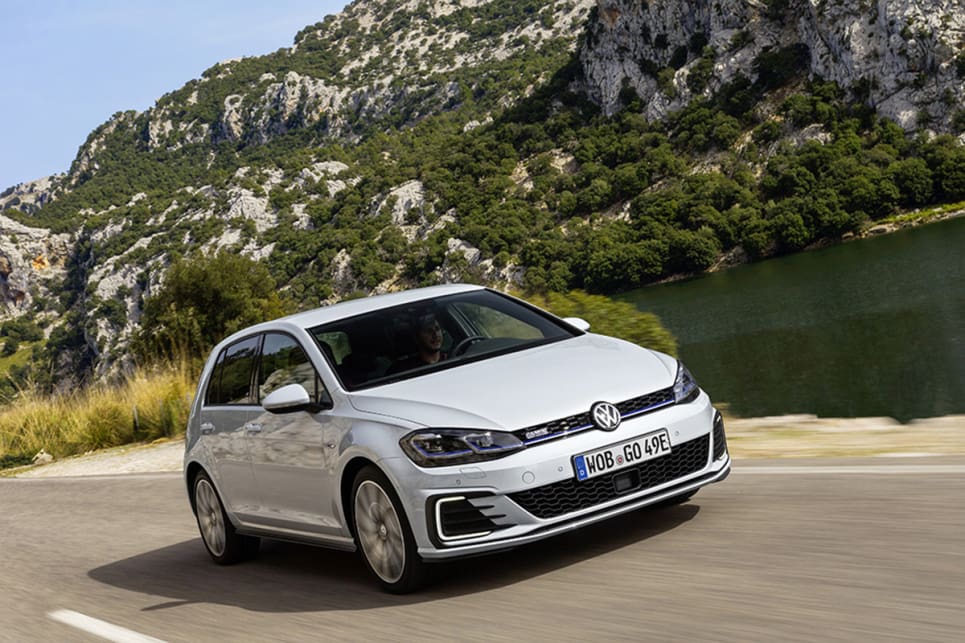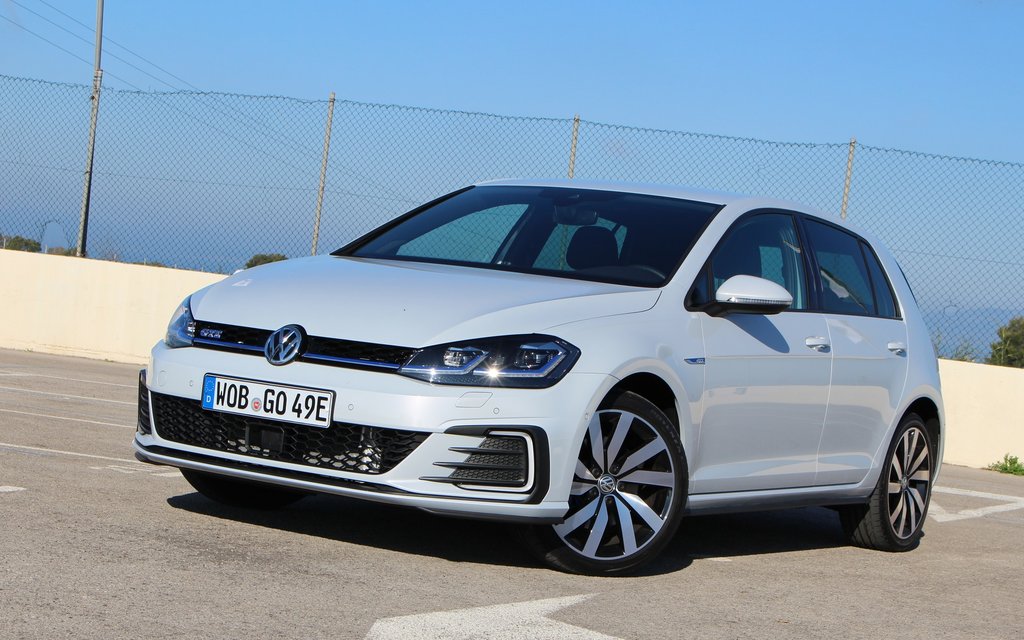
It might look like a regular Volkswagen Golf. Even one with the flavour of the sporty GTI. But, like Clark Kent, this mild-mannered hatch has amazing superpowers hidden beneath an unassuming exterior.
It’s the Golf GTE, a plug-in hybrid heading our way in 2018, and an updated version of the car we preview tested in 2016.
Explore the 2018 Volkswagen Golf Range
- Volkswagen Golf 2017 review
- Volkswagen Golf 110TSI 2017 review: snapshot
- Volkswagen Golf Trendline 2017 Review
- Volkswagen Golf Comfortline hatch 2017 review: snapshot
- Volkswagen Golf Highline hatch 2017 review: snapshot
- Volkswagen Golf Trendline 2017 review: snapshot
- Volkswagen Golf Comfortline 2017 review: snapshot
- Volkswagen Golf Wagon Highline 2017 review: snapshot
- Volkswagen Golf Alltrack 2017 review: snapshot
- Volkswagen Golf GTI 2017 Review
- Volkswagen Golf GTE 2018 review
As well as a 1.4-litre, turbo-petrol four-cylinder engine, the GTE features a compact electric motor connected to its six-speed dual-clutch auto transmission, to boost power and torque, and help this Golf record stunning fuel economy and CO2 emissions numbers.
Is there anything interesting about its design?
Volkswagen intends to sell a million electric cars by 2025, and believes it doesn’t need a shouty Hybrid design like the Toyota Prius to do it.
The only external clue to the GTE’s special status is subtle blue highlights around its badgework, because of course, blue means green (officially it indicates ‘Volkswagen Electric Mobility’). Push the large VW roundel on the nose and it swings open to allow the charging connector to plug-in.
Where the Golf GTI has a red keyline running along the grille and lower part of the headlights, the GTE features blue inserts in the same position. The GTI has individual exhaust outlets left and right, the GTE has twin tailpipes on the left.
Distinctive C-shaped daytime running lights sit in the GTE’s lower bumper, but the honeycomb structure in its radiator grille trim is identical to the GTI’s.
The interior treatment is just as familiar, with a blue version of the GTI’s famously red ‘Clark’ tartan seat trim the big hint that this car is different.
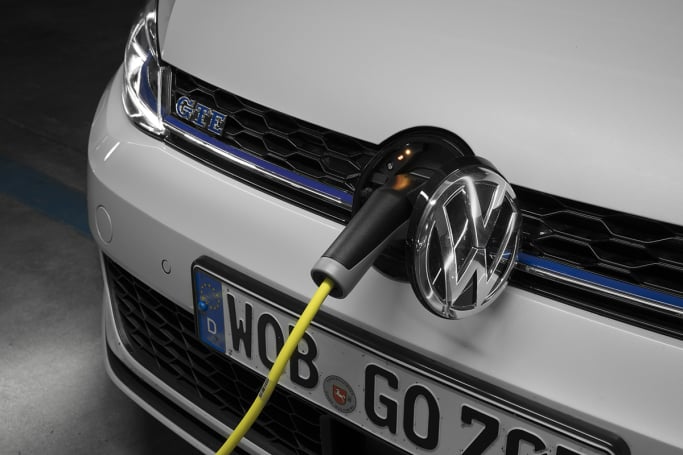
How practical is the space inside?
The Golf GTE is compact at just under 4.3 metres long, but interior space is plentiful. There’s loads of room and storage space up front with two cupholders, door pockets with bottle holders, and plenty of oddments space including a decent glovebox and lidded bin between the seats.
Backseaters cop another pair of cupholders, and adjustable air con vents (with flow control) is a big plus.
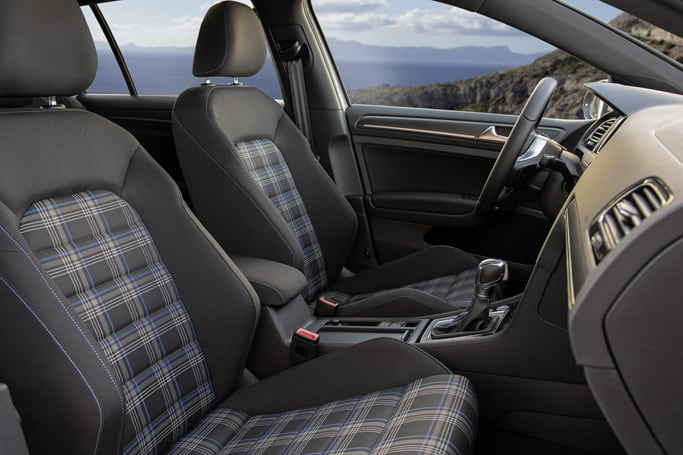
There’s heaps of space in the back as well. Sitting behind the driver’s seat, set to my 183cm position, head and legroom is generous.
Volkswagen claims 380 litres VDA of cargo volume with the 60/40 split folding rear seats up, and a healthy 1270 with them tipped forward.
Don’t bother looking for a spare tyre, all you’ll find under the cargo floor cover is electrical system hardware and the top of the relocated petrol tank. A repair kit is your only option.
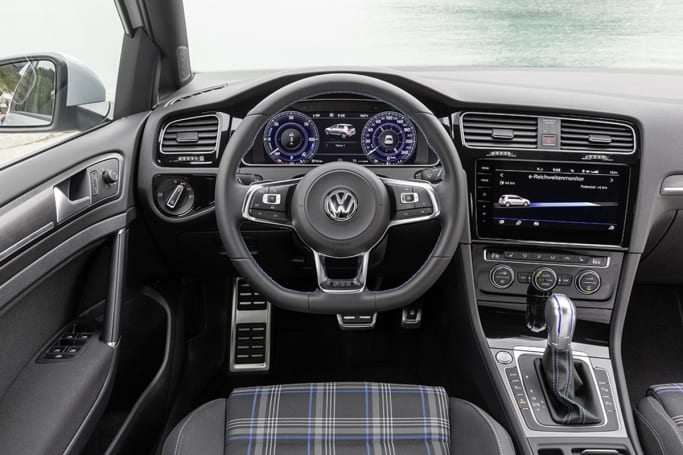
Does it represent good value for the price? What features does it come with?
So, what’s the catch? Well, the GTI’s tech and tuning comes at a price. Volkswagen Australia has announced a predicted sticker of $53,000, plus on-road costs; around $10k more than an auto GTI.
But Ben Wilks, Volkswagen Australia’s GM for marketing and product planning, says, “This car’s not about [VW] making money. It’s a statement in terms of where we’re headed as a brand.”
While not in the GTI’s performance league, the GTE is quick, capable, and satisfying to drive.
That said, while exact spec is yet to be finalised, you can expect a healthy standard equipment list including, a leather multi-function sport steering wheel with shift paddles and aluminium accents, LED headlights and tail-lights (with ‘dynamic’ scrolling indicators at the rear), the ‘Driving Profile Selector’ system, 16-inch ‘Astana’ alloy wheels (our test car rolled on 17s shod with 215/45 Michelin Primacy rubber), ‘Discover Pro’ radio-navigation with 9.2-inch screen and the ‘Active Info’ configurable instrument display.
Add in a rear-view camera, parking sensors, rain-sensing wipers, auto headlights, heated sports front seats, ‘Air Care Climatronic’ dual-zone climate control with allergen filter, ambient lighting (blue, of course), plus MirrorLink, Apple CarPlay and Android Auto multimedia support, and the dollars don’t look quite so steep.
What are the key stats for the engine and transmission?
The GTE is powered by a 1.4-litre direct-injection, turbo-petrol engine (110kW/250Nm) and an electric motor (75 kW), with a combined output of 150 kW/350Nm available for short-term bursts in GTE mode.
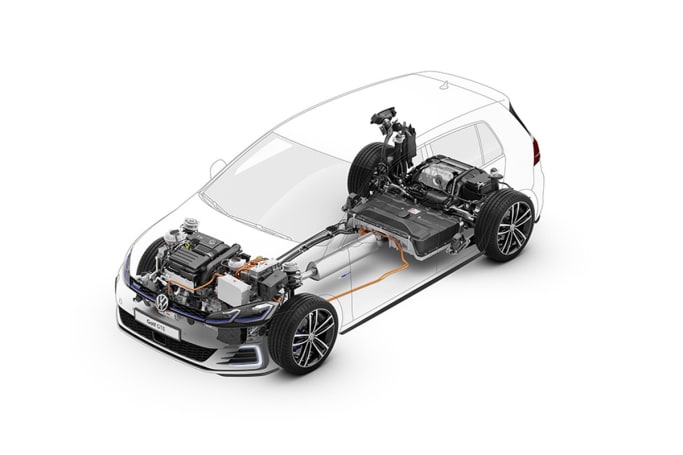
Much of the time petrol-only mode means 110kW, peaking from 5000-6000rpm, and 250Nm available from 1500-3500rpm.
Drive goes to the front wheels via a six-speed, dual-clutch auto transmission, with the electric motor effectively incorporated with it.
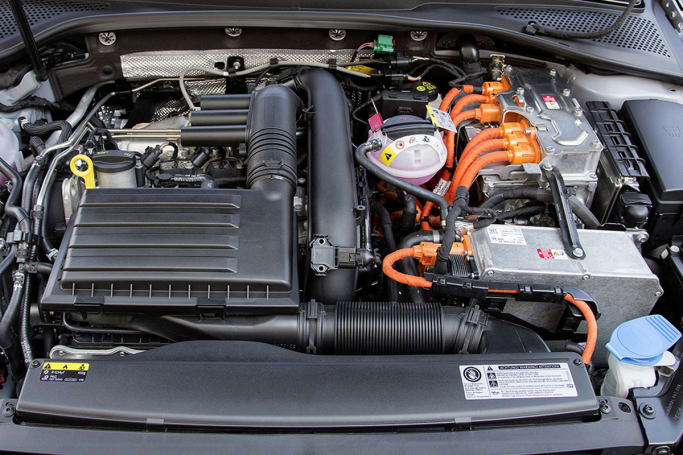
How much fuel does it consume?
The combined output of the GTE’s electric motor and direct-injection petrol engine puts it in the warm hatch category, yet claimed fuel economy for the European combined cycle is roughly equivalent to a well-maintained postie bike. That’s 1.6L/100km, with C02 emission sitting at a miniscule 36g/km.
Despite a 40-litre fuel tank (10 litres smaller than the GTI’s), the GTE has a claimed range approaching 900km! Slight snag is you’ll need to stump up for Premium 95RON unleaded.
The lithium-ion battery pack located under the floor gives the GTE a claimed EV range of 50km at speeds up to 130km/h.
GPS and road data are used to predict and control use of the electric motor and petrol engine by taking the route ahead into account to save energy.
And using the ‘E-Mode’ function, the battery can be recharged via the engine, regenerative braking, or plugging into a standard wall socket. A normal recharge will take around four hours, or closer to two and a half with a fast charger.
Volkswagen has developed a new hybrid strategy for the Golf GTE in Europe called ‘Predictive Hybrid Control’. In combination with a navigation system, GPS and road data are used to predict and control use of the electric motor and petrol engine by taking the route ahead into account to save energy.
The system recognises approaching towns and automatically switches the car to zero-emission electric mode in advance. It also predicts hills and motorways, with petrol engine running the norm for touring, and the electric motor virtually the default in town.
What’s it like to drive?
While not in the GTI’s performance league, the GTE is quick, capable, and satisfying to drive. Volkswagen claims the 1.6-tonne GTE will sprint from 0-100km/h in 7.6sec, in combined engine/motor GTE mode.
Sadly, our test example was low on battery charge at the start of a close to 300km preview drive from Hamburg in Germany’s north, roughly 300km south-east to the nation’s capital, Berlin. So, we had a relatively small taste of pure EV and combined GTE modes.
In ‘normal’ auto Golfs, a rearward tug of the gear lever from the D position selects Sport mode, but in the GTE that move engages ‘B’ driving mode, focused on maximum energy regeneration (perfect for steep descents, approximately zero of which were present on our drive).
But the most noticeable thing about driving the GTE is how normal it feels. Push the GTE button on the centre console and both power units work together to deliver spirited performance.
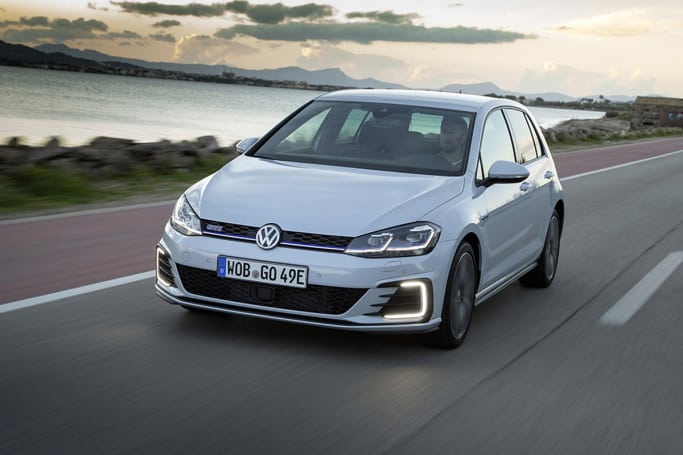
The extra weight of the electric motor and 8.7kW/h lithium-ion battery pack is partially offset by the smaller petrol engine, with the electric motor delivering a big slug of torque from standstill.
The only real snag is the synthesised engine sound support. We’re not big fans of such aural skull-duggery.
Ride comfort is Golf-like, meaning excellent, and the seats are comfortable, but an extra 200-odd kg of kerb weight impacts dynamic response. The GTE is far from wallowy, but it can’t match the GTI’s nimble character.
The electrically-assisted steering delivers good road feel, and unlike other regenerative brake set-ups, the the brakes are strong and progressive.
What safety equipment is fitted? What safety rating?
ANCAP safety rating
Golfs of all descriptions incorporate an impressive array of standard safety tech, including active features like cruise control (with programmable speed limiter), distance warning display, driver fatigue detection, AEB, ABS, EBD, BA, EDL, multi-collision brake, ASR, tyre pressure indicator, and a rear-view camera.
And when all that isn’t enough to avoid a collision, no less than seven airbags are on board (driver and front passenger head and side, driver’s knee and front and rear curtain).
Although the 7.5 upgrade hasn’t been specifically tested by ANCAP, the current Golf scored a maximum five-star rating.
There are three child restraint top tether points across the back seat, with ISOFIX anchors on the two outer positions.
Higher order tech like adaptive cruise control, lane assist, blind spot monitor, and rear traffic alert is likely to be included in an optional pack.
Although the 7.5 upgrade hasn’t been specifically tested by ANCAP, the current Golf scored a maximum five-star rating when it was assessed at launch in early 2013.
What does it cost to own? What warranty is offered?
Warranty
Basic warranty
3 years / unlimited km warranty
Volkswagen Australia’s new vehicle warranty covers three years/unlimited km, with paint covered for the same period, and the main steel body structure under warranty for no less than 12 years (unlimited km).
Recommended service intervals are yet to be confirmed for Australia.

